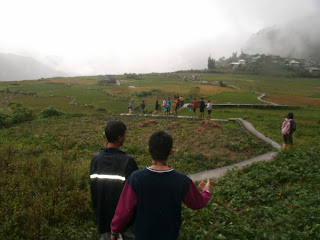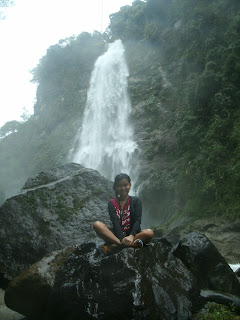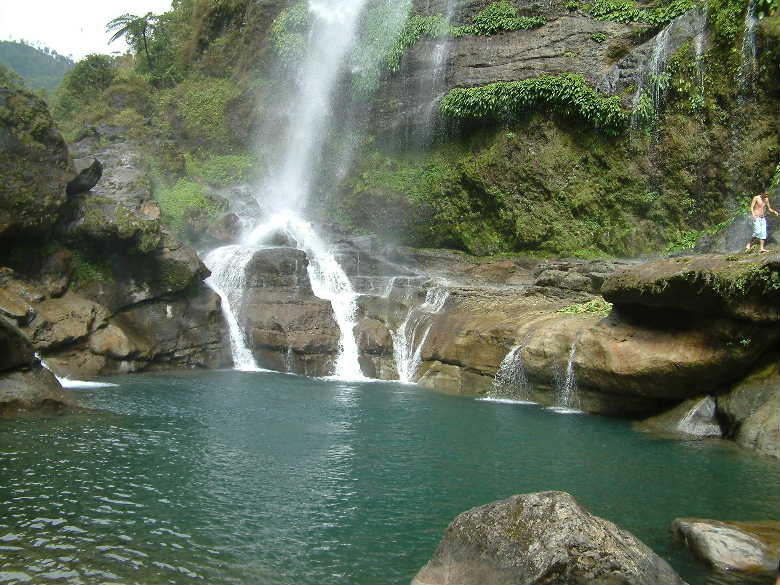 |
| (c) thelongestwayhome |
Anyone who is up to an outdoor challenge with a heightened level
of difficulty must try exploring the Lumiang-Sumaguing Cave Connection, the limestone
caves of Sagada. Not only is it famous for the unique rock formations, defined
stalactites, stalagmites, and columns that characterize its insides – unlike the
caverns we know in common, this cave connection entails a challenge to the mind
and body of a brave soul.
“For three hours, you will scale limestone rock faces, rappel
down ledges of cave rock, wade and even swim through bodies of water and crawl
through narrow crevasses to witness fascinating rock formations that nature has
artfully sculpted through thousands of years” (Espina, n.d.).
 |
| Lumiang Cave (C) soloflightEd |
LUMIANG CAVE
As in any other cave, the muddy steps, rocky and slippery trails, and
bat guanos are the obstacles the adventurer has to conquer, yet with the Lumiang
Cave, there’s more to our stereotypical conception of a cave adventure. J
Part of the experience is dipping the body into several pools of
ice cold water in order to transfer from a point to another. It is not unlikely
for people to be diagnosed with hypothermia after submerging themselves to such
chilly water, thus, to finish the connection, the amateur spelunker has to do a
lot of physical preparation; either by taking really cold showers or gathering
first-hand inquiries.
 |
| Lumiang burial grounds (c) Robx Bautista |
No one is advised to enter the Lumiang Cave, the entrance which
formerly served as the Sagadans’ burial ground, without a tourist guide. The
adventure is initiated by a prayer, after which, adventurers have to crawl
through really narrow holes and climb through seemingly unbearable passages.
 |
| Narrow passage at Lumiang Cave (c) pyrotensive |
The activity thus requires a lot of stretching and major physical training.
The lack of it, according to a previous adventurer’s account, made his legs
shake and knees wobble due to force and stress. The passage, meanwhile, takes
only one person at a time. Because it is necessary to cross pools of 8 meters
deep, spelunkers need to be anchored with ropes. But the physical exhaustion is
in the end, or halfway rather, with the view of the big rice granary formation.
J
SUMAGUING CAVE
 |
| Sumaguing cave (c) Agnes Manalo |
The Sumaguing cave is more frequently visited than Lumiang, since
its relatively easier level of difficulty. Unlike in Lumiang, where mostly
experienced spelunkers are brave enough to take the challenge, Sumaguing accommodates
people of all kinds and ages, including natives, foreigners, children and
senior citizens. It is easier to tread because people just have to slide or
walk around rock formations and water pools; there were no risks of crawling
through narrow holes.
The cave connection adventure can last for about four to six
hours. Not even the exit from the cave would signify the finish line, for
outside are more steps of stairs that would lead the spelunkers to their hired
jeepneys.
“Despite the seemingly dangerous and physically-taxing
maneuvers required for spelunking in Sagada, major injuries are rare and most
travelers only come out covered with mud" (Espina, n.d.).
 |
Rappelling @ Sumaguing (c) Robx Bautista
|
While most people
think that it is such a risky endeavor to delve into these caves, they hinder
themselves from discovering such an untainted nature’s gift. It may leave
anyone exhausted at the end of the day, yet nothing beats the fulfillment
people can get from uncovering the splendor of the secluded, like these caves.
Cave connection? The
challenge must be accepted. :D
WHAT TO WEAR (c) SAGGAS
Upper body:
· Body fit shirts
· Sleeveless Tops
Preferably easy dry!
Lower body:
· Leggings or tights or spandex
Because it gives the lower body easy movement and flexibility
It creates a secondary skin to the legs, reducing the risk of getting scratches
Easily dries up when wet, keeping the body warm
Maintains a lovely figure of yourself!
Tip: In selecting spandex, choose the more sturdy ones since rocks and surfaces are sharp enough to easily tear them off.
Other opts:
· Short pants or jogging pants
· Cycling shorts or trunks for men
Footwear:
· Water shoe
For good grip (it adapts to the contour of the rock), and is of easy dry material
Other options:
· Flip-flops
Easy carry! There are other parts of the cave that would require people to walk barefooted
· Croc or clogged type slippers
Can keep the feet free from scratches



















